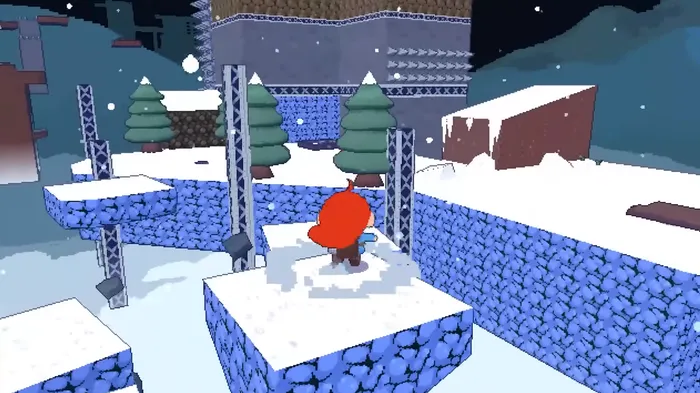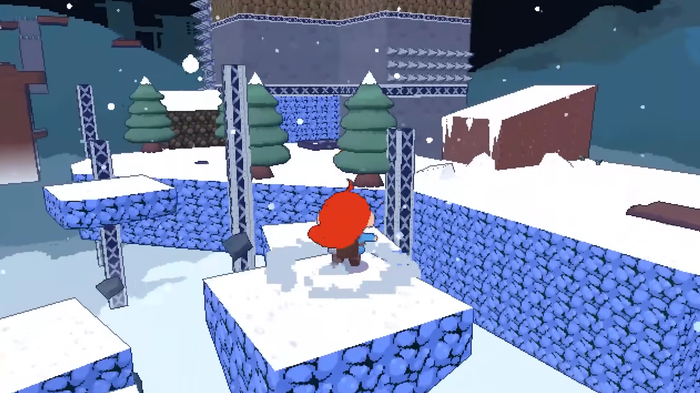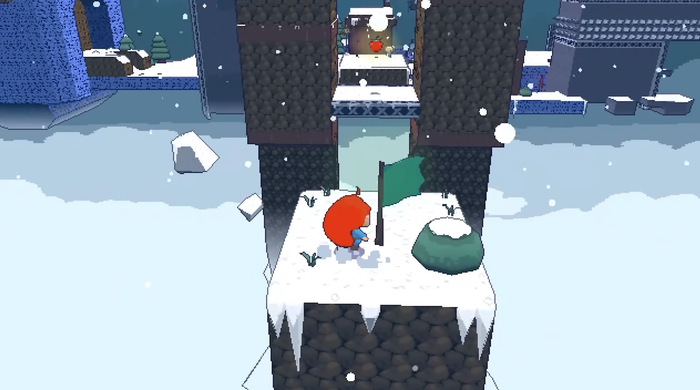
Celeste 64: Fragments of the Mountain is a celebration of the straightforward yet precise platformer about facing inner demons and risking life and limb for delicious berries, Celeste. Created in a week for a game jam by the team behind the original Celeste, it takes the game’s 2D platforming and expands it into three dimensions, Super Mario 64-style.
Game Developer sat down with Pedro Medeiros de Almeida, art director for Celeste 64, to talk about how a Quake level editor would inspire the team to take the game’s 2D platforming in a new 3D direction, the challenging elements that came from that switch in dimensions, and what it felt like for the team to return to a beloved creation six years after its release.
What interested you about porting Celeste‘s excellent platforming to 3D with Celeste 64?
We wanted to create something special for Celeste‘s anniversary but were not sure of the direction. That week, I was looking into Trenchbroom, a really interesting Quake level editor, so I showed it to the team. We got excited about it and decided to use it for a 3D version of Celeste, using Noel Berry’s engine.

As art director, what thoughts went into capturing the look and feel of Celeste with a 3D visual style? Specifically an N64-like 3D style?
I aimed for a retro aesthetic without strictly emulating the N64 style. I just wanted a simple style that would fit well with the low poly maps of Trenchbroom and that could be easily animated. The textures were also in pixel art so they would be easy to tile around and would have a nice nostalgia to them.
Did you try to stick to the visual limitations of the N64?
The project wasn’t initially named Celeste 64, so we didn’t try to emulate limitations at all. In most of our games, we only use limitations when they help us to keep a consistent style and force us to be more creative. The game jam’s week-long timeframe meant prioritizing speed. This is why I focused on whatever was the fastest—having a low color count, pixel density, and low poly count just happened to be the fastest thing that would look interesting to me.
What challenges came from taking the game’s platforming mechanics into 3D?
Mostly depth perception! Initially I had underestimated the difficulty of conveying the character’s location in 3D space. Noel had this really good idea of drawing a vertical line from your character to the ground, which I think helped a lot. We had a lot of experimentation with shaders, fog, and outlines, trying to find something that would look nice and wouldn’t be too confusing. I’m happy with the result we got in the end.

How did 3D affect the way you designed the level designs and their visuals? What felt different about designing platforming for 3D as opposed to 2D?
Things are much more “expensive” to make in 3D than 2D. This means that I put a lot more time in individual props, but this also means that I could be more creative in how I used them. One example is the “ice dripping” prop that was used everywhere, I could rotate, resize, or scale it—something that can’t really be done a lot in pixel art. Another thing is that we had to take in consideration how the areas would look when seen from far away, what would drive the eye, etc.
Can you tell us about some element of the design process for one of the areas you’re proud of?
I didn’t design the levels themselves, but I decorated and tried to make them look nice! I think the car behind the player area is one of my favorites, it’s tiny, useless, and fun!
Where this game was put together in a week, what thoughts went into scoping the project so it did not get out of hand? What thoughts went into your workflow to keep from grinding your team down to get it done?
I think we tried to keep the scope down and focus on a single area.
One “technique” I like to use is to heavily prioritize tasks. To choose my next task, I ask myself, “If I could only do one more thing, what would that be?”

What did it feel like to return to the world of Celeste for its anniversary? What sorts of emotions were you and the team going through while coming back to this game, in a sense?
It was very magical – lots of nostalgic and warm feelings working on this one! It’s very tempting to not just go back and work on this until it’s a full game now! Coming from Earthblade, it’s really nice how simple and straightforward this game was.






